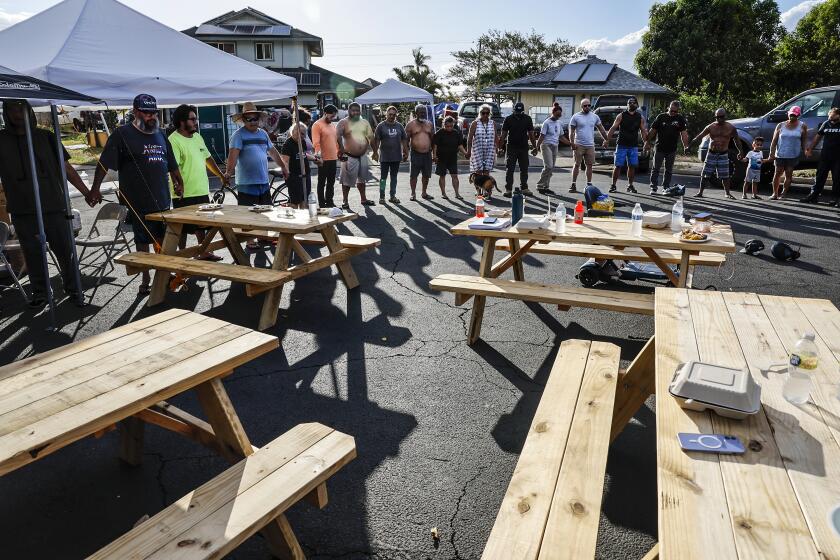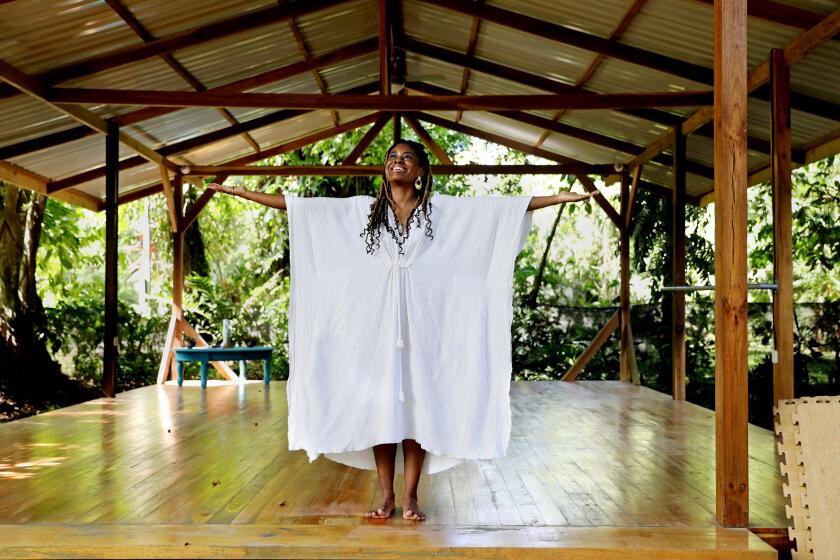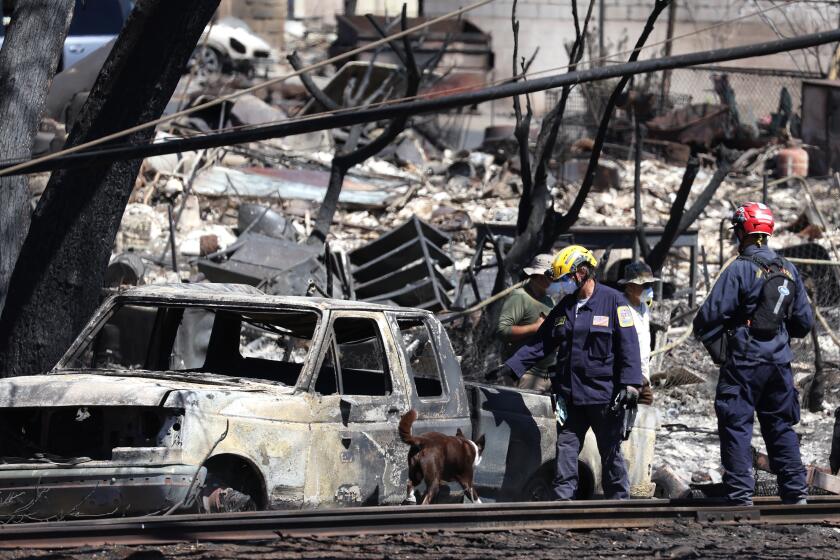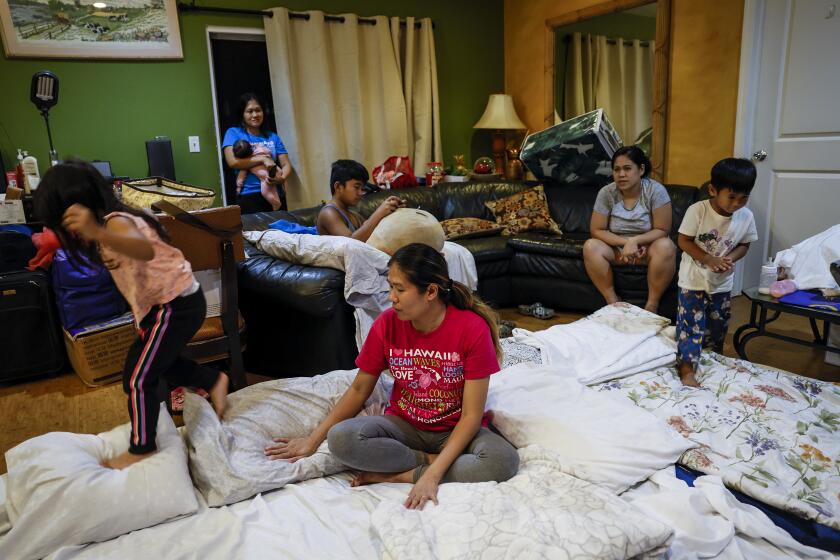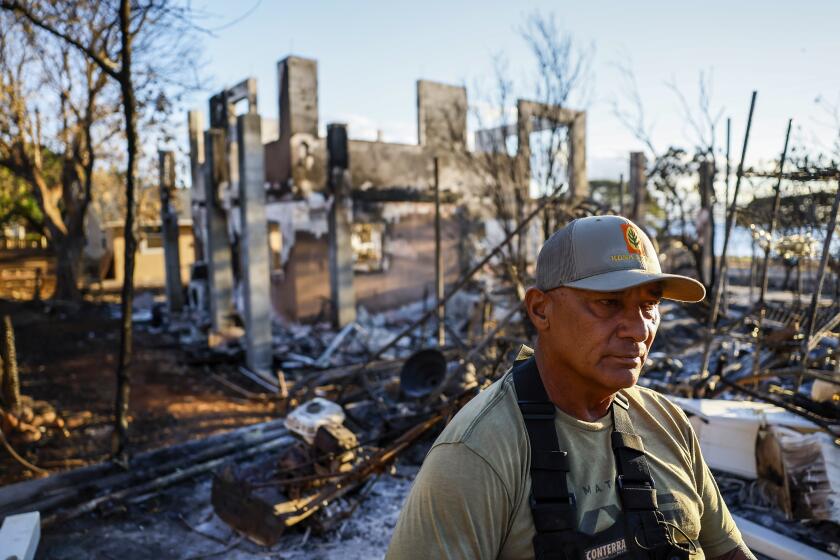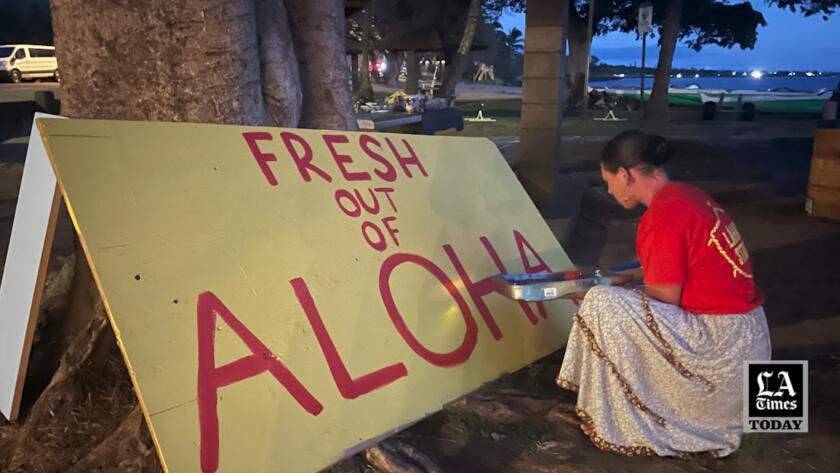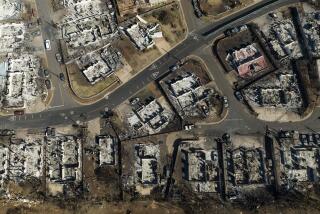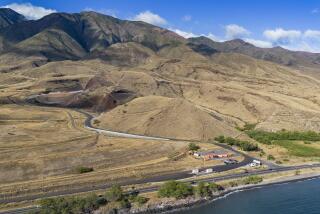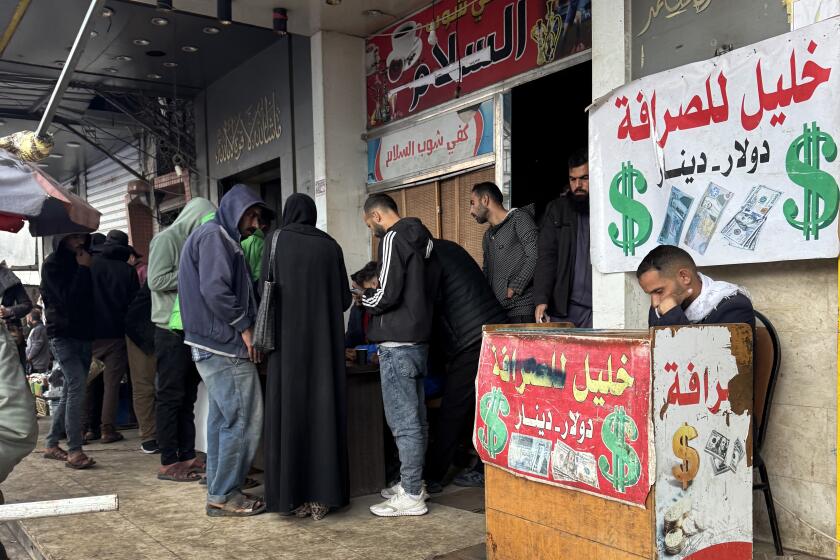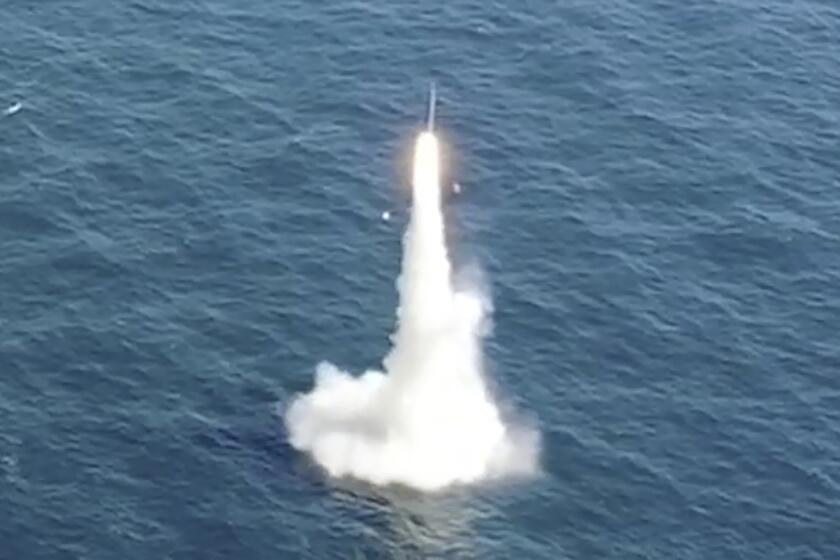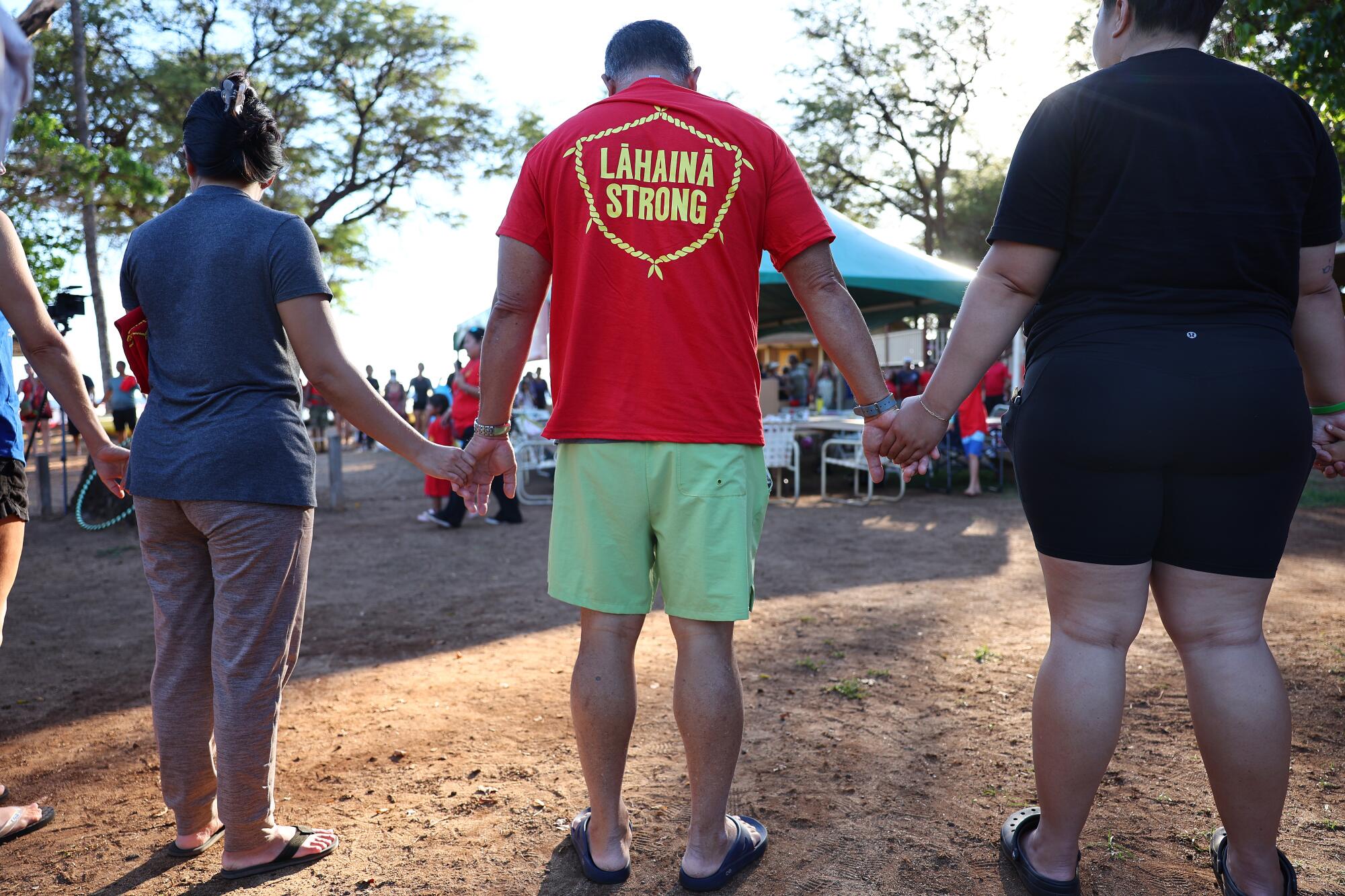
LAHAINA, HI. — Paele Kiakona is not ready to go back to work. Still reeling after August wildfires ravaged his hometown of Lahaina, he doesn’t want to serve tourists, pouring brut Champagne or topping their mai tais with honey-liliko’i foam.
“I’ve seen people dead on the street,” Kiakona said. “My grandma’s house is gone. My whole town died.”
The 28-year-old Hawaii native who worked as a bartender at a farm-to-table restaurant north of Lahaina is wary of fielding questions, including what he says is now the ultimate dreaded icebreaker: “Did you lose your house in the fire?”
In this moment, he said, visitors aren’t the ones who need his care.
“Our aloha is reserved for our family right now,” Kiakona said. “It’s not just endless aloha.”
Hawaii is famous for its “aloha spirit,” a concept rooted in Native Hawaiian culture that long ago was commodified into the guiding philosophy for resorts and other businesses catering to tourists. More than a chill tropical greeting — an exotic salutation used in place of hello and goodbye — aloha is defined by state law as “mutual regard and affection” and extending “warmth in caring with no obligation in return.”
It’s a spirit that’s been in abundance among locals as people helped each other after the fire. But as tourists return to West Maui, edging closer to the charred ashes of a disaster in their search for paradise, some Hawaiians are reassessing what “aloha” means to them, and how much of it, exactly, they want to give to strangers when so many in their community have lost homes and loved ones.
They’re not withdrawing aloha, they say, just redefining and redistributing it.
“Aloha has commercially been sold as mai tais and a good time, and that the arms will be welcome and ready for you,” said Kaliko Kaauamo, 37, a taro farmer and curriculum writer for the Maui Arts and Cultural Center. “Aloha, it’s not always happy and sunshine and rainbows … sometimes having aloha is screaming and crying and being there to hold people in their grief.”
As Maui hotel rooms sit empty after the deadly Hawaii wildfire that devastated Lahaina, some are sounding economic alarms, asking tourists to return.
Ninety-eight people died in the fire that raged through the historic town of Lahaina on Aug. 8, destroying or damaging more than 2,200 structures. This month, the state reopened West Maui, even though many blue-collar residents say it is too soon to greet visitors with warm smiles, alohas and fresh flower leis.
Hawaiian hospitality is a core part of Maui’s economy. With nearly 40% of the island’s gross domestic product linked to tourism, Gov. Josh Green has argued that thousands of jobs and the region’s economy would be jeopardized if West Maui resorts remained closed to visitors. But a significant number of workers say they should not be expected to welcome tourists at the hotels and condos north of Lahaina until they have schools and stable housing.
More than 6,800 Lahaina residents are sheltering in hotel rooms or rental condos with no firm reassurance of how long they will be able to stay.
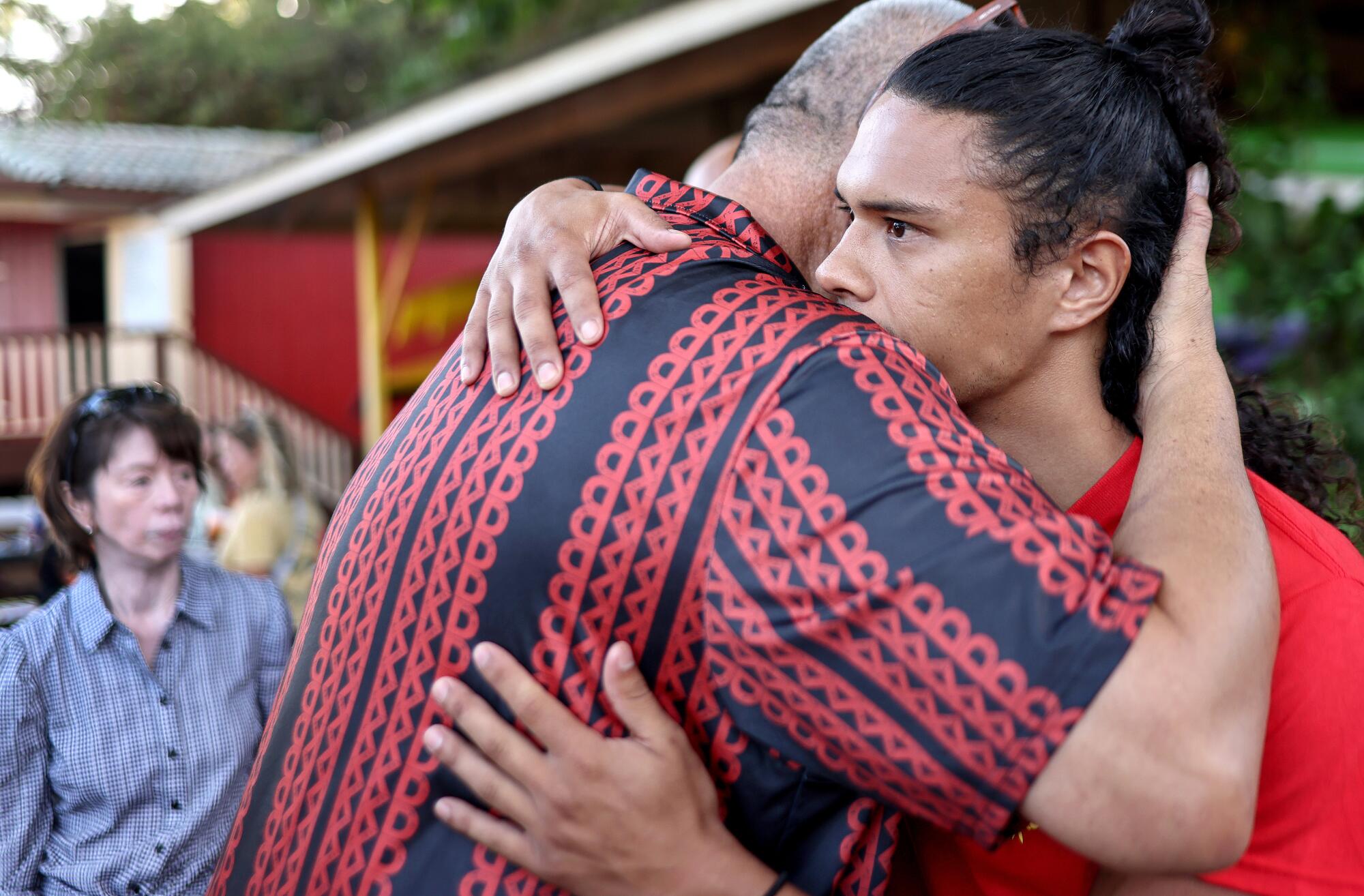
Kiakona, an organizer of the grassroots activist group Lahaina Strong, warned that tourists who flock to the golden sand beaches and hotels with swim-up grotto bars and spas offering $200 massages could face backlash from locals who fear they will be priced out of their hometown.
“We made our plea. You decided not to listen,” Kiakona said. “The blood is on your hands.”
As one West Maui resident wrote on a sign to protest the reopening: “FRESH OUT OF ALOHA.”
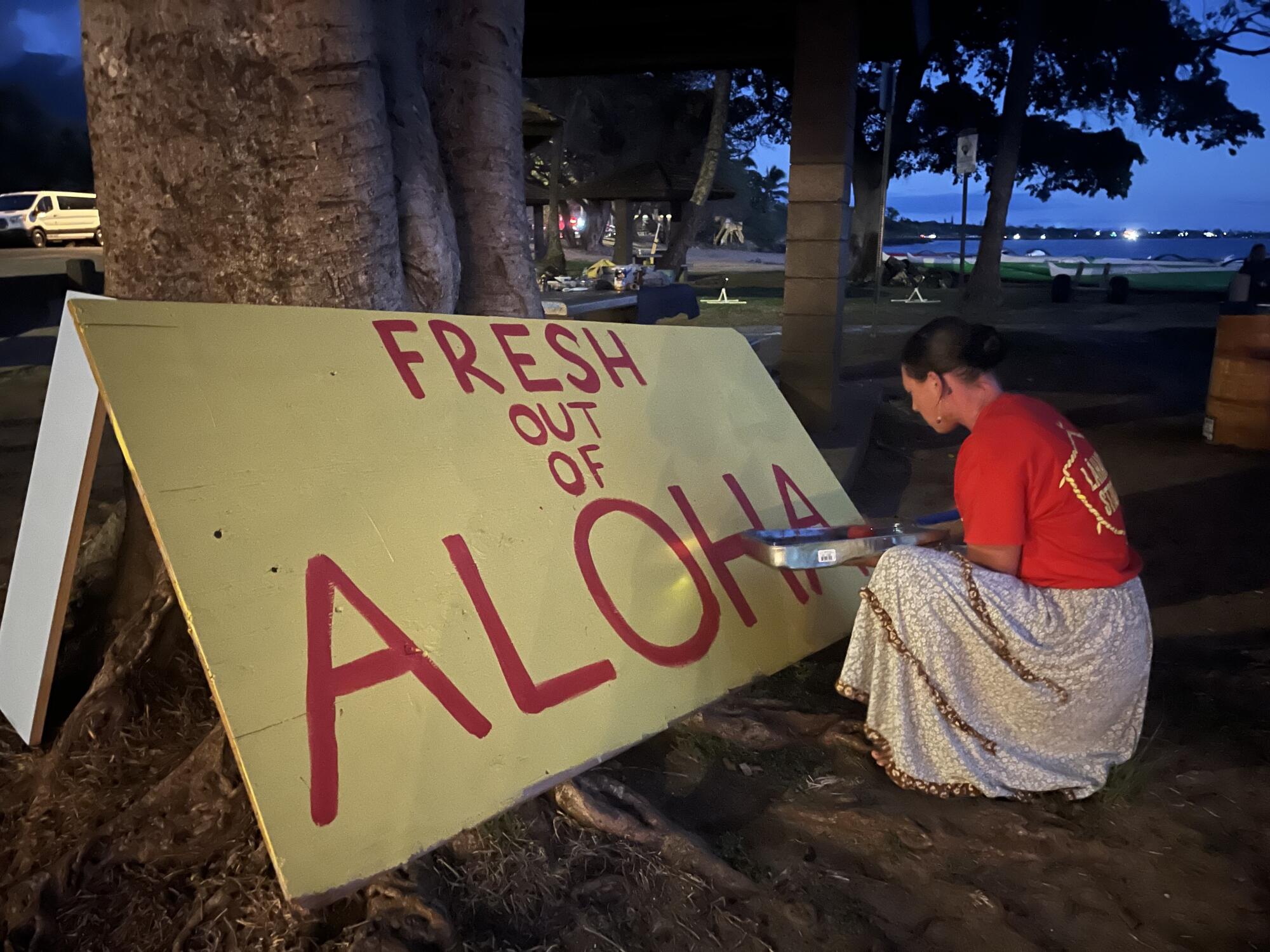
::
Tension has long existed between Hawaii locals and visitors.
In 1778, British explorer Capt. James Cook was welcomed when he anchored off the Hawaiian islands by locals eager to trade cuttlefish, breadfruit and pigs for nails and iron tools. But he and his sailors eventually overstayed their welcome, depleting supplies and spreading venereal diseases. Cook was eventually stabbed to death.
In the early 1800s, Christian missionaries arrived in Hawaii, encouraged by Native refugees who had fled after the brutal wars of King Kamehameha’s conquest and urged Westerners to evangelize the islands.
‘I’m not captive any more,’ says a Californian now living in Costa Rica — one of many Black Americans citing racism as why they’re leaving the U.S.
Then sugar and pineapple magnates from the U.S. and Europe followed, destroying the ecosystem by digging up native taro and banana trees and draining the wetlands to irrigate their plantations. They overthrew the Hawaiian Kingdom’s Queen Liliuokalani in 1893, and five years later the U.S. annexed Hawaii.
By then the commercialization of “aloha” was already underway. George Kanahele, the late Native Hawaiian historian and activist, wrote that aloha-themed souvenirs were popular among Hawaii’s earliest tourists. Among the bestsellers was sheet music for the song “Aloha Oe,” written and composed in 1878 by Queen Liliuokalani, when she was a princess. Later came the Aloha shirt, patented in 1936.
The allure of aloha as a slogan only grew after 1959, the year that Hawaii became a state and Pan American Airways inaugurated jet travel to Honolulu — part of a campaign by state leaders to reduce economic dependence on plantations by expanding tourism.
Today “aloha” is printed on cheap souvenir T-shirts, shot glasses and postcards depicting women in grass skirts. It is etched below a rainbow on every Hawaiian vehicle license plate. It is even part of a job title as resorts hire “Aloha ambassadors” to share traditional Hawaiian cultural practices.
But Aloha goes deeper for many Native Hawaiians. “Aloha” literally means “presence” (Alo) and “breath” (Hā). Hawaii’s government introduced the Aloha Spirit law in 1986, an effort inspired by Pilahi Paki, a Maui-born poet and philosopher who spoke of the aloha spirit at a 1970 conference on the islands’ future.
At a time when the U.S. was entrenched in the Vietnam War and many Hawaiians felt they were losing links to their history, culture and language, Paki argued that “the world will turn to Hawaii as they search for world peace because Hawaii has the key ... and that key is ALOHA.”
This idea of aloha as a radical act of love with no conditions attached has some wondering whether it allows outsiders to take advantage. Some Hawaiian cultural experts say aloha is a complex and fluid idea, too often misconstrued as a sweet and servile way of tolerating visitors.
“To suggest that Hawaiians avoid direct confrontation out of fear or some false notion of aloha is to ignore the whole set of operative values that Hawaiians respected, such as aggressiveness, courage, dignity, honor, competitiveness, and rivalry,” Kanahele wrote in “Ku Kanaka — Stand Tall: A Search For Hawaiian Values.”
After the fire, Kaauamo said, Maui residents were resetting boundaries.
“It’s Aloha 2.0., in that, as much as we serve others, it’s time to serve the self,” she said. “And as much as I give so freely to strangers, I will now give that to my neighbor, to people closer in the bubble.”
::
When Mahealani Criste sees tourists driving around the Lahaina bypass or carrying folding chairs to the beach, she wants to scream: What the hell are you guys doing here?
The 37-year-old reservations agent for a vacation rental company applied for a leave of absence without pay this month because she could not face going back to her job curating perfect vacations for visitors.
Answering questions about snorkel cruises and lomilomi massages felt like too much after her apartment complex — one of the few affordable housing units in town — collapsed in the fire. As she struggled to find a new rental for herself and her two children, she worried she might hang up on tourists, or scream, or cry.
“You’re making vacation dreams come true, setting their itinerary, but there is no itinerary,” she said flatly. “Our town burned.”

Still, some residents who lost their homes are welcoming tourists.
Beberlyn Aveno, a 56-year-old Filipino immigrant, was back selling puka shell necklaces at her kiosk at the Whalers Village shopping mall in Kaanapali recently. She wished more tourists were back; some days she made only $20.
But Aveno said it wasn’t just the money that kept her working; she would go crazy, she said, if she stayed in her cramped, temporary hotel room.
“It’s good to get out and have people to talk to,” she said. “I accept everyone. It’s healing.”
Grace Tadena, a 55-year-old Filipino immigrant and front desk agent at the Ritz Carlton 10 miles north of Lahaina, said she was glad the resort had reopened for tourism.
“It is the bread and butter. We can’t survive without our business.”
Most tourists, Tadena said, had been kind — and she, in turn, was not holding back her aloha, a value she embraced after moving to Hawaii in 1989. “Aloha stays with me wherever I am,” she said.
But many locals say they no longer have the bandwidth to overlook some visitors’ entitled or insensitive behavior.
Just days after the fire, locals were outraged when a charter boat brought tourists to snorkel around Lahaina before search and rescue teams had finished scouring the water for bodies. A few residents have almost come to blows with tourists who stopped on the side of highway to snap photos of the burn zone.
California’s bone hunters, forensic experts who are veterans of disaster, sift through Maui’s burn fields for the missing dead. ‘We owe it to the families.’
Courtney Lazo, 33, a real estate agent who grew up in Lahaina and lost her family home, could not bring herself to show properties — or aloha — to visitors as she struggled to find housing for her husband, two teens, father and 81-year-old grandma.
Tourists at the resort where she is staying have stopped her with questions. However well meaning they might have been, she finds it infuriating to explain her situation over and over to strangers.
“You’re choosing to vacation here in Lahaina and create memories in the middle of our broken lives and burnt downtown.”
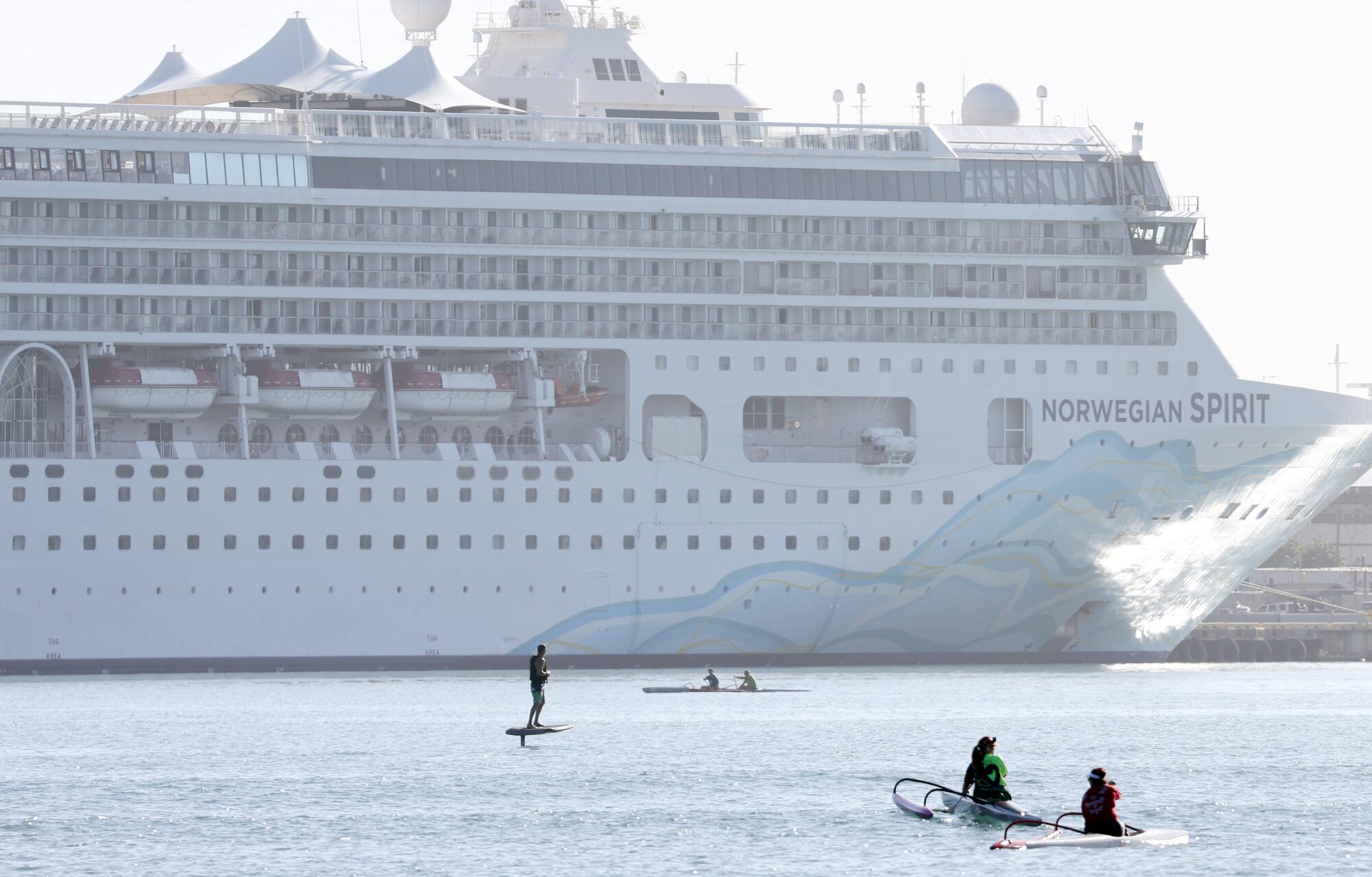
::
Many visitors to Hawaii are charmed by the idea of aloha, locals say, without grasping the impact of their presence of the island.
“There’s postcard Hawaii — Elvis and Don Ho and grass skirts — what everybody comes here for,” said Naiwi Teruya, 35, a cook who before the fire worked as an executive chef at Down the Hatch seafood restaurant. “They don’t understand the struggles that the people who live here have been going through, like fighting for water for many, many, many generations.”
The fire, many locals argue, is a direct result of colonial and modern development practices that uprooted native trees and diverted water. Over the last half-century, a string of upscale resorts with tropical gardens, lavish pools and golf greens have risen north of Lahaina, draining water from local land and contributing to a housing crisis.
Jowel and Relyn Delfin have taken 13 relatives into their central Maui home.
In recent decades, a growing number of visitors snapped up condos as second homes and short-term rentals. Now the median home price in the Lahaina area is $1.7 million, out of reach for blue-collar workers earning $20 to $25 an hour.
Many of those who are trying to find housing — to replace apartments that burned or to stay in while their homes are rebuilt or remain off-limits — blame outsiders for driving up prices.
Tiffany Teruya, 37, Naiwi’s sister and a single mother who lost her rental apartment in the fire, said she could not find a new place to live on West Maui for her and her 13-year-old son without government assistance. The cheapest apartment she could find cost $3,000 a month — more than double what she paid before the fire.
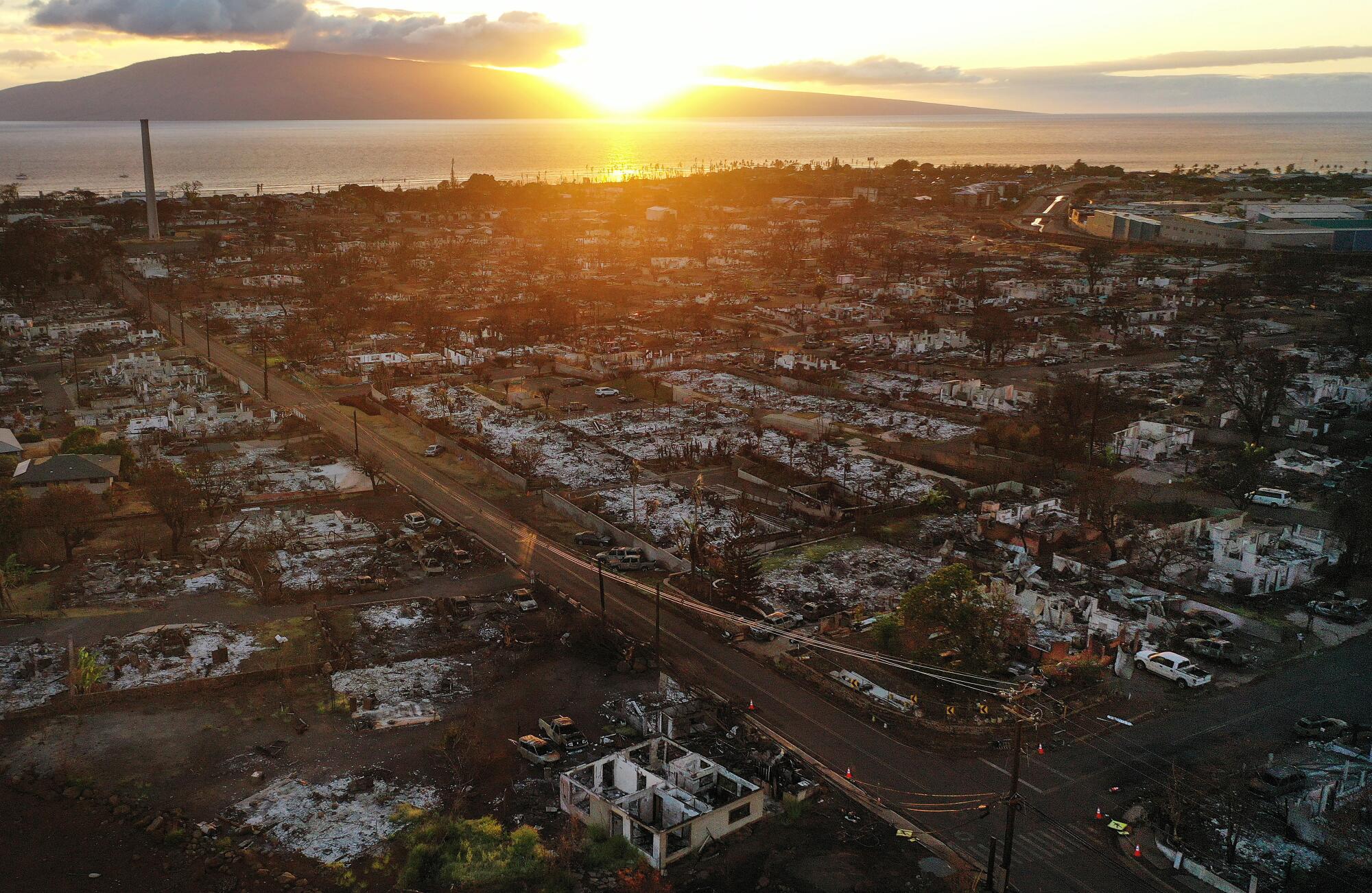
It is time, Teruya believes, to purge the island of short-term rentals.
“I would like to see vacation rentals gone from every neighborhood on the whole island,” Teruya told the City Council. “Lots of us lost everything, and the very little some of us may have left, we going to fight for that.”
::
Among locals, there is no shortage of aloha.
In the days after the fire, as little aid came from the government, Lahaina schoolteachers, surfers, lifeguards, bartenders, roofers and carpenters rallied to help their neighbors.
Legendary big-wave surfer Archie Kalepa has turned his home in Lahaina into a well-orchestrated supply depot for survivors of the devastating fire.
They hauled in water, gas, air purifiers and respirators in boats, trucks and dugout canoes. They set up a network of relief hubs in parks and front yards offering displaced residents fresh water, cans of Spam, and bags of rice, diapers and medicine. They provided massages and acupuncture and story time for kids.
Fishermen hauled in blue striped snapper from the sea, hunters caught wild boar in the mountains. Cooks fried up the fish and roasted pork for their neighbors.
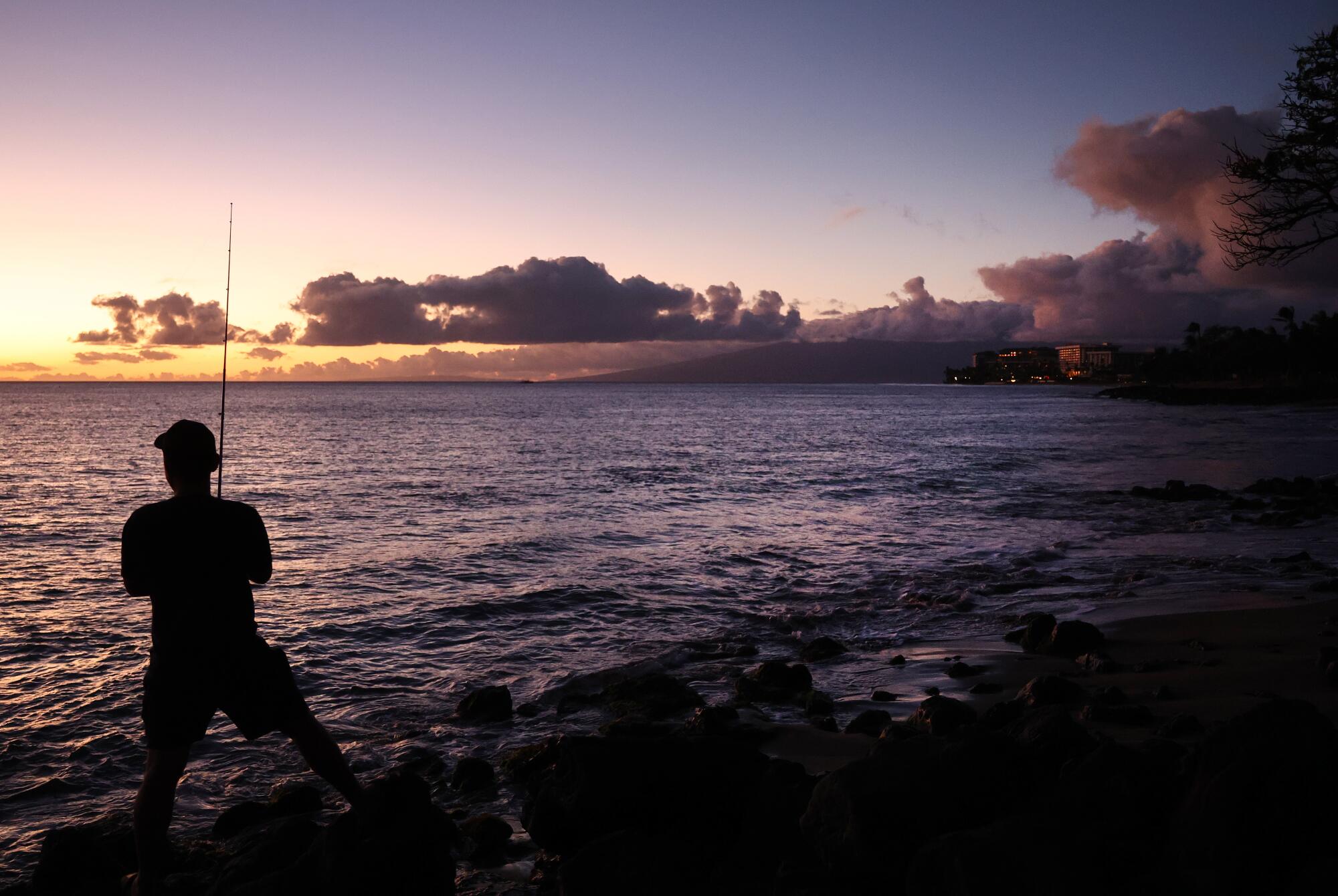
The bonds between islanders, Naiwi Teruya said, had gotten closer.
“I don’t want to serve everyone who has everything,” Teruya said after finishing a shift frying fish at a distribution hub at Honokōwai Beach Park. “I would much rather take care of people suffering.”
Still, even though Teruya preferred that West Maui remained shuttered to tourists, he said he would keep on giving aloha to everyone.
“We have a sacred aloha,” he said. “We say it because no matter how down we are, we can still deliver the greeting and the feeling behind it, because we’re not a weak people.”
The word sets the tone, Teruya said, and it reminds people, even strangers, that they’re part of a community.
“The word ‘aloha’ is not just this thing you do because your job tells you to do it,” he said. “It’s our way of saying, ‘I can see you, you’re a person. And I’m also a person.’ ”
Watch L.A. Times Today at 7 p.m. on Spectrum News 1 on Channel 1 or live stream on the Spectrum News App. Palos Verdes Peninsula and Orange County viewers can watch on Cox Systems on channel 99.
More to Read
Sign up for Essential California
The most important California stories and recommendations in your inbox every morning.
You may occasionally receive promotional content from the Los Angeles Times.
